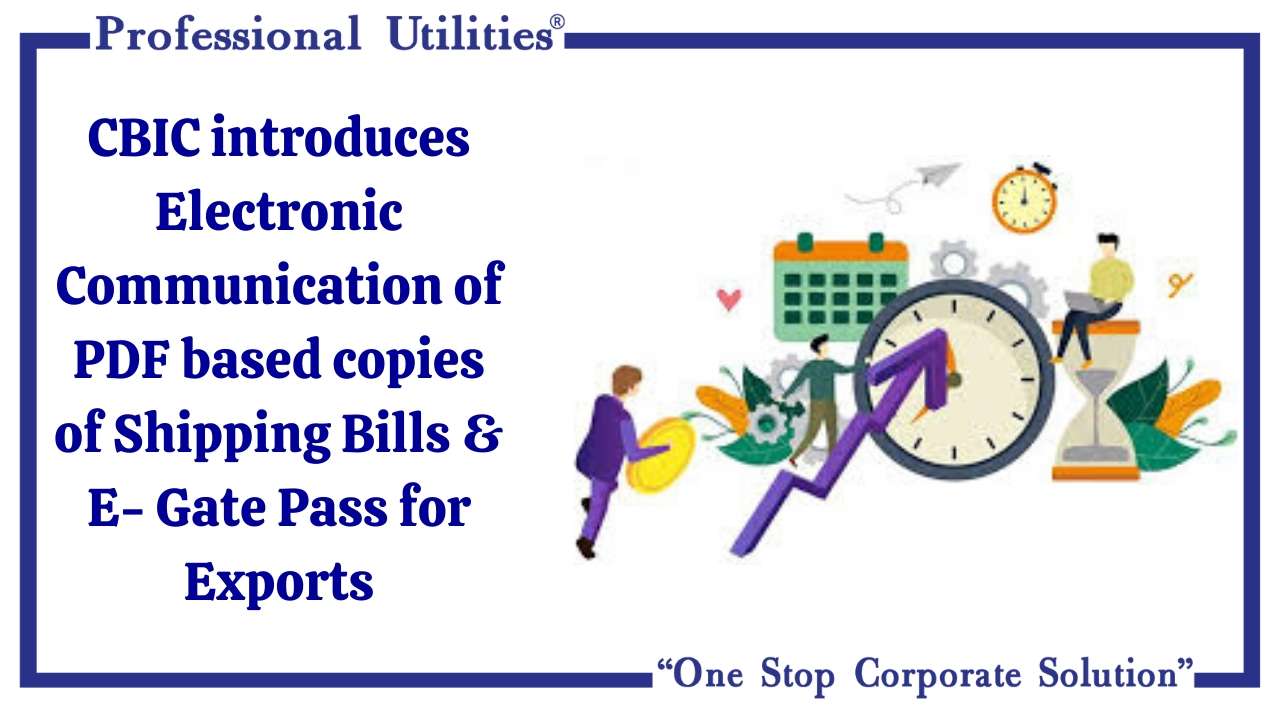
Introduction:
The information that Customs and other agencies require to process import and export declarations can be obtained from several documents. These documents can be divided into the following categories:-
- transport documents, such as bills of lading, air waybills, consignment notes, rail/road manifests, etc
- commercial documents, such as invoices, purchase orders, any applicable contracts, technical documentation on products, packing lists, etc
- regulatory documents such as licences, permits, certificates, etc.
Paperless clearance infers no printed version accommodation in terms of professional career to administrative specialists and, moreover, no printed copy reactions from administrative specialists to exchange. It includes electronic transmission of every single administrative report to Customs and to other administrative offices. This disposes of the need to print and physically append the archives to shipments. Printed or manually written reports can cause troubles in the preparing of shipments, prompting expenses and postponements. Paperless preparing implies that administrative specialists, additionally, can convey electronically their choices on discharge/hold/installment of shipments.
In its proceeding with attempt to advance 'Faceless, Contactless, Paperless Customs' the Central Board of Indirect Taxes and Customs (CBIC) has chosen to depend upon computerized duplicates of the Shipping Bill and get rid of the necessity of taking massive printouts from the Service Center or upkeep of voluminous physical agendas in the Custom Houses.
This reform will yield immense benefits in terms of saving the time and cost of compliance for the trade, thereby enhancing the ease of doing business, while providing enhanced security features for verification of authenticity and validity of the electronic document.
CBIC directs that w.e.f 22.06.2020 only the digital copy of the Shipping Bill bearing the Final LEO would be electronically transmitted to the exporter and the present practice of printing copies of the said document for the exporters and also for maintaining a docket in the Customs House would stand discontinued.
Final Let Export Order (LEO) copy of the Shipping Bill:-
- CBIC vide Circular No. 55/2016-Customs dated 23.11.2016, had done away with Exchange Control copy of the Shipping Bill and made printing of the Export Promotion copy of the Shipping Bill optional.
- Currently, the Shipping Bill is being printed in duplicate (Customs Copy and Exporter Copy).
- Further, it is ascertained that, the Export Promotion copy is also being printed in many instances, based on the request of the exporters.
- This necessitates the exporter/Customs Broker to take physical printouts in the Service Center and present it to the Customs Officer. In many locations, physical signing of the printouts is also insisted upon.
- To promote a paperless environment, CBIC has decided to do away with the taking the printouts referred above.
- Instead, Directorate General of Systems has enabled a functionality of communicating by email, the PDF version of the Final LEO copy of the Shipping Bill to the Customs Broker and exporter, if registered.
- This electronic Final LEO copy can serve multiple purposes such as being shared with DGFT, Banks etc.
Features Electronic Communication of Final LEO copy of the Shipping Bill
- The PDF version will bear a digitally signed and encrypted QR code which can be scanned to verify the authenticity of the document using Mobile App ICETRAK.
- The QR code is tamper proof, which is digitally signed by CBIC to ensure the authenticity.
- Key details like SB No., SB Date, FOB value, Package Details are available in the secured QR Code.
- A version number is also embedded in the QR code which can be used to ascertain whether the document is indeed the latest version (in case of cancellation of LEO etc.). The same would be verifiable at ICEGATE Enquiry.
- Let Export Order (LEO) message shall also be sent to custodians who are integrated with ICEGATE.
- SB LEO message is not being received electronically by those custodians who are NOT connected via MFTP.
- Field formations are urged to immediately ensure the registration of all custodians with the ICEGATE system.
E-Gatepass Copy of Shipping Bill:-
- The Shipping Bill printout is also being used extensively by the logistics operators during the movement of export goods, including transshipment, by road or rail or during the loading of cargo into vessels, aircrafts etc. as a proof of export.
- This is despite the electronic information existing in the Customs Automated System and Board having made printing and use of Transference copies of Shipping Bill optional.
- Therefore, taking cognizance of the logistics needs, the Directorate General of Systems would henceforth communicate through email, the eGatepass PDF copy of the Shipping Bill to the Customs Broker and the Exporter, if registered.
- Accordingly, Board has decided to do away with the printing of Transference copies of Shipping Bill.
Features of e-Gatepass Copy of Shipping Bill:-
- The electronic document provides key summary details like Container/Packages related to logistics movement and facilitates authentic, easy and quick verification by the Custodian, at the point of Entry/Exit.
- There will be following 2 types of QR codes which will ensure that only those containers/package move out which are covered under the Gatepass document:-
- for entire eGatepass document, and
- for each container/package covered under the eGatepass
- In case of packaged and other bulk cargos, the eGatepass copy of the Shipping Bill will be generated during LEO
- In case of containerised cargo, the eGatepass copy of the Shipping Bill will be generated after the receipt of the container stuffing information for the Shipping Bill.
CBIC desires that scenarios other than those mentioned above, where printouts of Shipping Bills are required shall be immediately informed. The respective Principal Commissioners / Commissioners of Customs would take a decision on allowing printouts only in such exceptional situations.
It is also repeated that for the purposes of exports, all the supporting documents should mandatorily be uploaded in eSanchit and collection of physical dockets shall be dispensed with.
Why Professional Utilities?
At Professional Utilities, we leverage our industry knowledge and expertise to help businesses navigate complex regulations, minimize risks, and optimize operations for maximum efficiency and profitability.

One Stop Corporate Solution

PAN India
Services

Free Expert
Assistance

Google Verified
Business

Dedicated Support
Staff


.svg)







